Types and Programming Languages
�
�
Types and Programming Languages
Benjamin C. Pierce
The MIT Press
Cambridge, Massachusetts
London, England
�
©2002 Benjamin C. Pierce
All rights reserved. No part of this book may be reproduced in any form by
any electronic of mechanical means (including photocopying, recording, or
information storage and retrieval) without permission in writing from the
publisher.
This book was set in Lucida Bright by the author using the LATEX document
preparation system.
Printed and bound in the United States of America.
Library of Congress Cataloging-in-Publication Data
Pierce, Benjamin C.
Types and programming languages / Benjamin C. Pierce
p. cm.
Includes bibliographical references and index.
ISBN 0-262-16209-1 (hc. : alk. paper)
1. Programming languages (Electronic computers). I. Title.
QA76.7 .P54 2002
005.13—dc21
2001044428
�
Contents
Preface
xiii
1
Introduction
1
Types in Computer Science
1.1
1
1.2 What Type Systems Are Good For
1.3
1.4
1.5
Type Systems and Language Design
Capsule History
Related Reading
10
12
4
9
2 Mathematical Preliminaries
15
2.1
2.2
2.3
2.4
2.5
16
Sets, Relations, and Functions
Ordered Sets
Sequences
Induction
Background Reading
18
19
20
15
I Untyped Systems
21
3 Untyped Arithmetic Expressions
23
3.1
3.2
3.3
3.4
3.5
3.6
23
Introduction
Syntax
26
Induction on Terms
Semantic Styles
Evaluation
Notes
34
43
29
32
�
vi
Contents
4 An ML Implementation of Arithmetic Expressions
45
4.1
4.2
4.3
46
Syntax
Evaluation
The Rest of the Story
47
49
5 The Untyped Lambda-Calculus
51
5.1
5.2
5.3
5.4
52
Basics
Programming in the Lambda-Calculus
Formalities
Notes
68
73
58
6 Nameless Representation of Terms
75
6.1
6.2
6.3
Terms and Contexts
Shifting and Substitution
Evaluation
80
76
78
7 An ML Implementation of the Lambda-Calculus
83
7.1
7.2
7.3
7.4
83
Terms and Contexts
Shifting and Substitution
Evaluation
Notes
87
88
85
II Simple Types
89
8 Typed Arithmetic Expressions
91
8.1
8.2
8.3
91
Types
The Typing Relation
Safety = Progress + Preservation
92
9
Simply Typed Lambda-Calculus
99
9.1
9.2
9.3
9.4
9.5
9.6
9.7
99
100
104
Function Types
The Typing Relation
Properties of Typing
The Curry-Howard Correspondence
Erasure and Typability
Curry-Style vs. Church-Style
Notes
111
109
111
95
108
10 An ML Implementation of Simple Types
113
10.1 Contexts
113
10.2 Terms and Types
10.3 Typechecking
115
115
�
Contents
vii
11 Simple Extensions
117
119
124
121
118
117
Base Types
Let Bindings
126
Pairs
11.1
11.2 The Unit Type
11.3 Derived Forms: Sequencing and Wildcards
11.4 Ascription
11.5
11.6
11.7 Tuples
11.8 Records
11.9
11.10 Variants
11.11 General Recursion
11.12 Lists
Sums
132
128
129
136
142
146
12 Normalization
149
12.1 Normalization for Simple Types
12.2 Notes
152
149
13 References
153
159
Introduction
13.1
13.2 Typing
Evaluation
13.3
Store Typings
13.4
165
13.5
Safety
13.6 Notes
170
153
159
162
14 Exceptions
171
14.1 Raising Exceptions
14.2 Handling Exceptions
14.3
Exceptions Carrying Values
172
173
175
III Subtyping
179
15 Subtyping
181
182
Subsumption
Properties of Subtyping and Typing
191
15.1
181
15.2 The Subtype Relation
15.3
15.4 The Top and Bottom Types
15.5
15.6 Coercion Semantics for Subtyping
15.7
15.8 Notes
Subtyping and Other Features
Intersection and Union Types
207
188
193
200
206
�
viii
Contents
16 Metatheory of Subtyping
209
16.1 Algorithmic Subtyping
16.2 Algorithmic Typing
16.3
16.4 Algorithmic Typing and the Bottom Type
Joins and Meets
210
213
218
17 An ML Implementation of Subtyping
221
Syntax
Subtyping
17.1
17.2
17.3 Typing
221
221
222
18 Case Study: Imperative Objects
225
230
229
228
Subtyping
Simple Classes
18.1 What Is Object-Oriented Programming?
18.2 Objects
18.3 Object Generators
18.4
229
18.5 Grouping Instance Variables
18.6
18.7 Adding Instance Variables
18.8 Calling Superclass Methods
18.9 Classes with Self
18.10 Open Recursion through Self
235
18.11 Open Recursion and Evaluation Order
18.12 A More Efficient Implementation
18.13 Recap
18.14 Notes
244
245
233
234
231
234
241
19 Case Study: Featherweight Java
247
249
247
Introduction
19.1
19.2 Overview
19.3 Nominal and Structural Type Systems
19.4 Definitions
Properties
19.5
19.6
Encodings vs. Primitive Objects
19.7 Notes
254
261
263
262
220
225
237
251
�
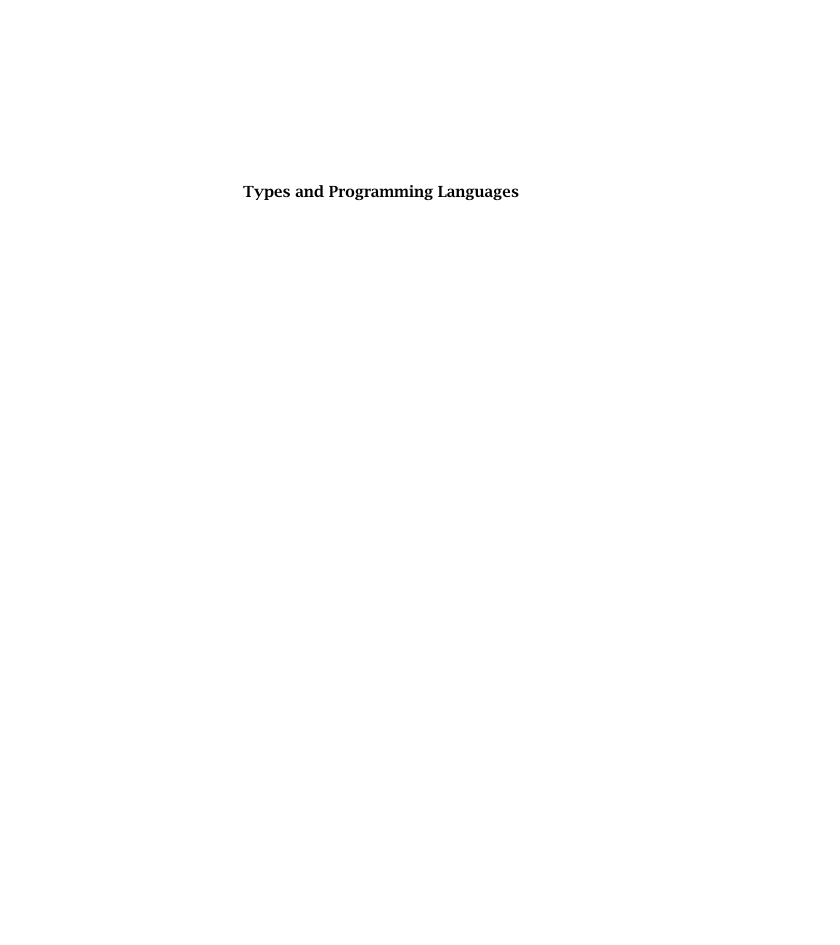

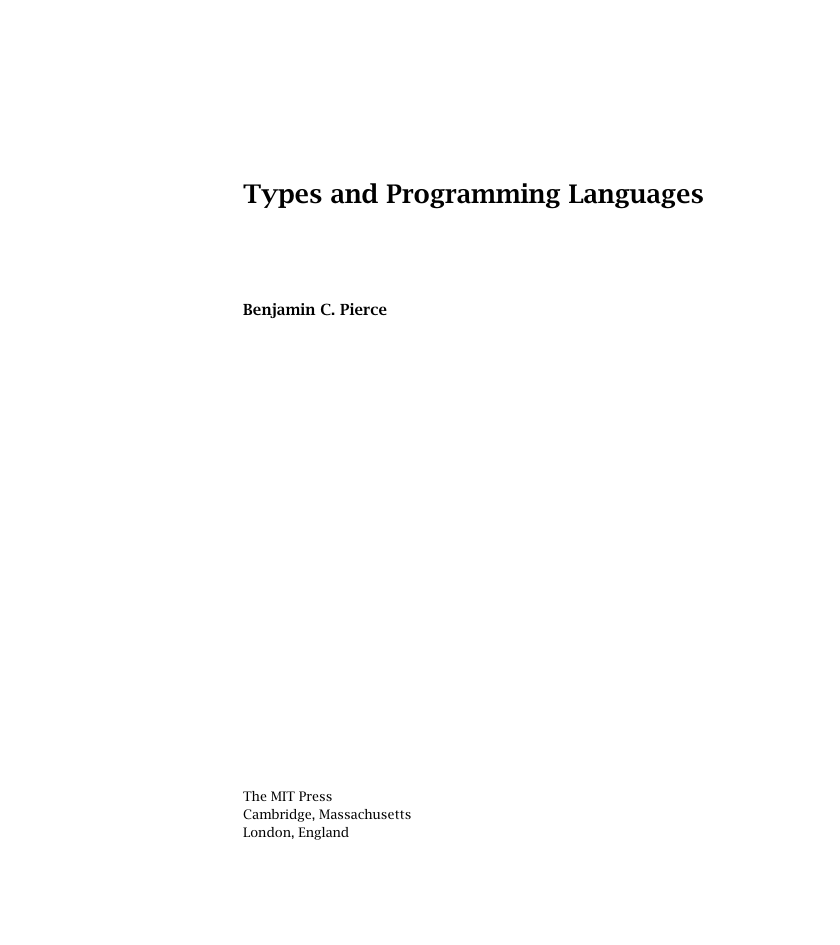
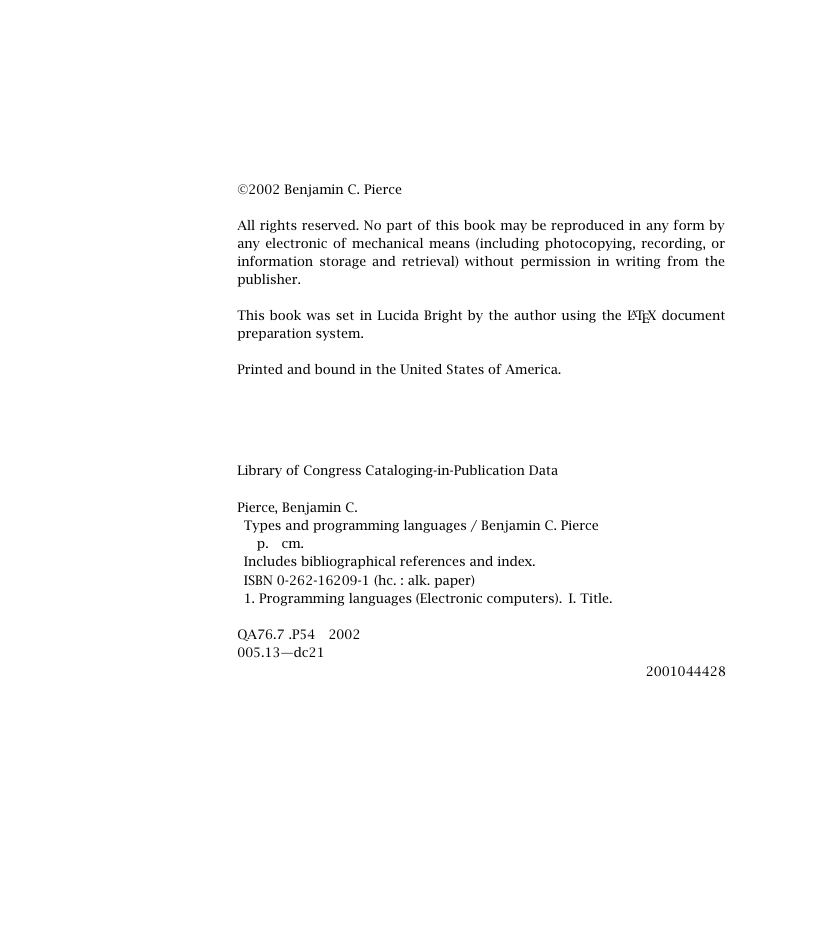

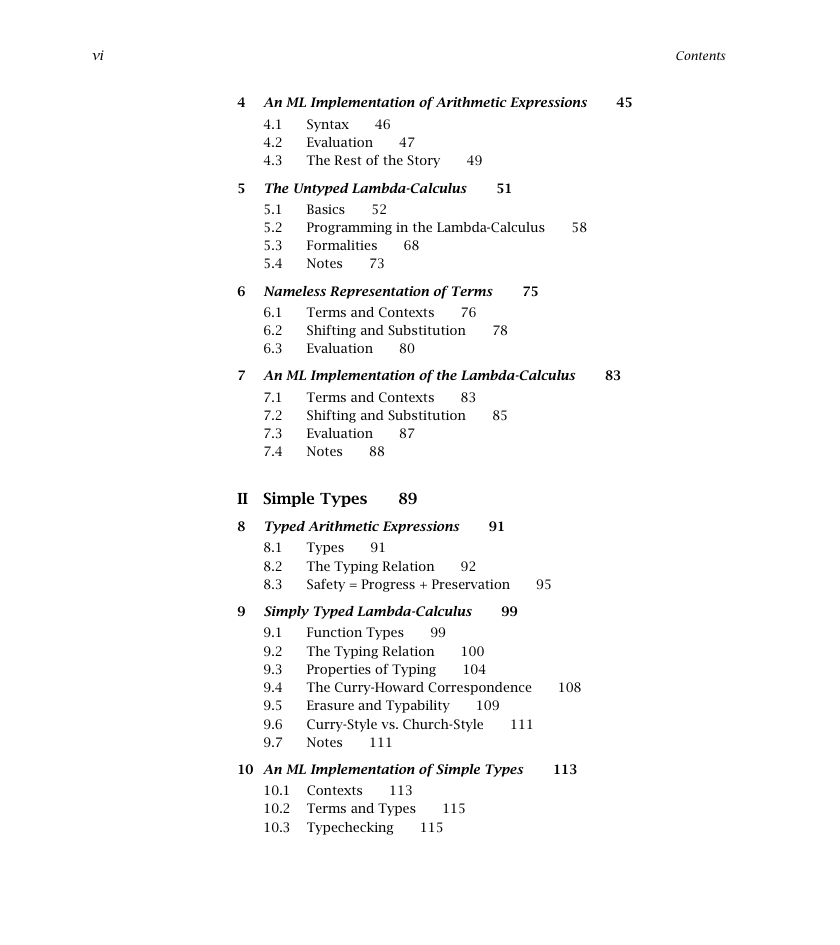

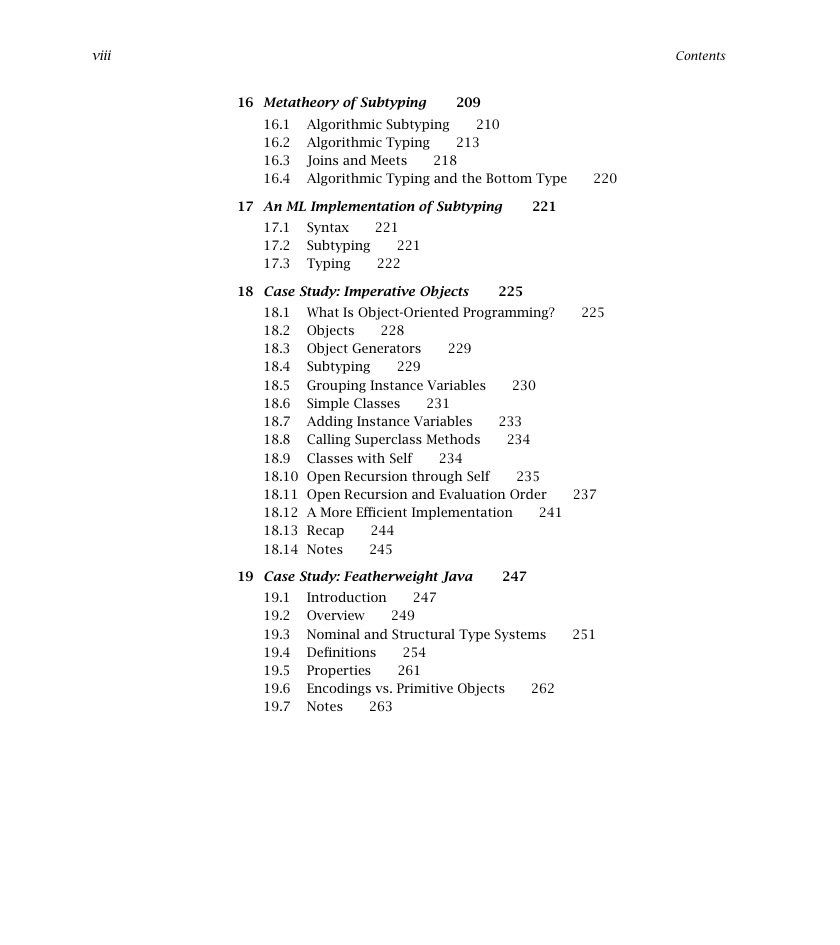








 2023年江西萍乡中考道德与法治真题及答案.doc
2023年江西萍乡中考道德与法治真题及答案.doc 2012年重庆南川中考生物真题及答案.doc
2012年重庆南川中考生物真题及答案.doc 2013年江西师范大学地理学综合及文艺理论基础考研真题.doc
2013年江西师范大学地理学综合及文艺理论基础考研真题.doc 2020年四川甘孜小升初语文真题及答案I卷.doc
2020年四川甘孜小升初语文真题及答案I卷.doc 2020年注册岩土工程师专业基础考试真题及答案.doc
2020年注册岩土工程师专业基础考试真题及答案.doc 2023-2024学年福建省厦门市九年级上学期数学月考试题及答案.doc
2023-2024学年福建省厦门市九年级上学期数学月考试题及答案.doc 2021-2022学年辽宁省沈阳市大东区九年级上学期语文期末试题及答案.doc
2021-2022学年辽宁省沈阳市大东区九年级上学期语文期末试题及答案.doc 2022-2023学年北京东城区初三第一学期物理期末试卷及答案.doc
2022-2023学年北京东城区初三第一学期物理期末试卷及答案.doc 2018上半年江西教师资格初中地理学科知识与教学能力真题及答案.doc
2018上半年江西教师资格初中地理学科知识与教学能力真题及答案.doc 2012年河北国家公务员申论考试真题及答案-省级.doc
2012年河北国家公务员申论考试真题及答案-省级.doc 2020-2021学年江苏省扬州市江都区邵樊片九年级上学期数学第一次质量检测试题及答案.doc
2020-2021学年江苏省扬州市江都区邵樊片九年级上学期数学第一次质量检测试题及答案.doc 2022下半年黑龙江教师资格证中学综合素质真题及答案.doc
2022下半年黑龙江教师资格证中学综合素质真题及答案.doc